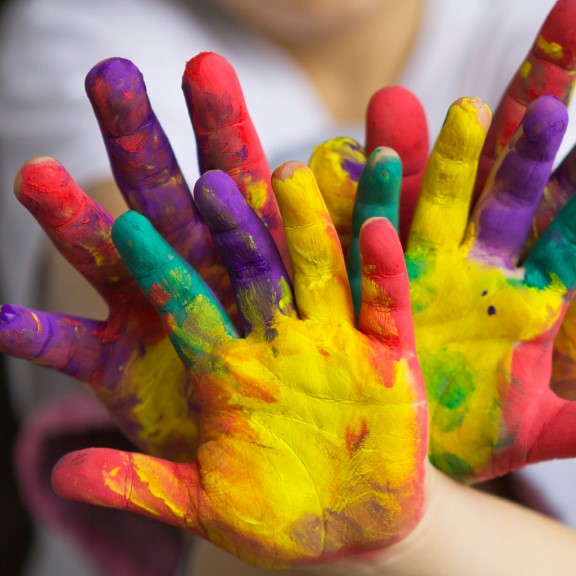Art Therapy is the use of expressive and artistic tools and techniques with therapeutic purposes. The artistic activity performed with therapeutic purposes, is geared to correct and manage problems, both psychologically and emotionally as well as socially. Its purpose exceeds the meaning of aesthetic result because the key in Art Therapy is the process used by the individual to contact his inwardness, given that art is used as a language of non-verbal communication.
The focus of Art Therapy is on the creative process and not on the final artistic product. The expression and creation is all that matters. The fact of producing a “creative trace” allows the individual to access his most hidden and not externalized elements and gives him the opportunity to strengthen his skills, often without realizing it.
The term «Art Therapy Workshop” is usually used because it is based on a participatory methodology that one learns experientially, on a specific project that requires teamwork. The definition of an Art Therapy workshop is based on its differentiation from a simple art workshop, which simply broadcasts specific techniques, without the term Therapy indicating a space of psychotherapy.
The tools of Art Therapy are the visual arts, dance, music, collage, writing, theatre and the therapeutic element is the realization that through artistic creation oral communication, group cohesion, personal expression are promoted. We try to run through the past, to understand the present and to project the future. Art Therapy appears like a way to symbolize through the creation of images. An autonomous space in its natural form, but also a field of personal internal space.
Art therapy is effective for people of all ages, from young children to older adults and everyone in between. Many individuals benefit from art therapy including but not limited to those struggling with stress management, anxiety and depression; people with histories of trauma or abuse, children and adolescents experiencing behavioral and communication issues, people living with adverse physical health conditions or other health disabilities and people dealing with loss and grief. Creating drawings, paintings, or sculpturing around the topics of houses and environments from the past can help refugees to retain their identity through art, creating safe spaces for the future helps to look ahead, retain resources, and regain control.


Art therapy sessions are held virtually or in a private, comfortable office space, where individuals are guided by their art therapist, either through a structured art directive that focuses on specific goals or through spontaneous art making. Throughout the art making process, the individual works with the art therapist to make connections, visually and/or verbally, to help achieve greater personal insight, resolve conflicts, improve interpersonal skills, manage problematic behaviors, and reduce stress. The art therapist’s focus is on what the individual needs in the moment, so art making may not necessarily be a part of each session. Individuals may also bring in artwork made outside of sessions to explore and discuss with their art therapist. Art therapy has huge benefits for the people. Art is transformative and always has been. It’s a part of what makes us human, the ability to create and admire the beauty and the horrors that we face. But it is also a part of what helps us deal with that very world we admire.
Very few people who are victims of torture receive treatment. This is a sad fact that people who work in this area are trying to combat every day. We must find ways of supporting and helping these vulnerable people come to terms with not only this, but also their own displacement, and the many stresses that coming to Greece will throw at them. And art therapy may just be the answer. It is also useful for those who deal with refugees, because the work they do is very difficult and hard. While making art in itself is therapeutic, the difference between art making and art therapy is the guidance of the professionally trained art therapist who is able to assist individuals with challenging or traumatic material that may arise during a session. The therapeutic relationship between the individual and clinician is an essential part of the therapy process, providing a supportive environment for growth and healing. Art therapy takes place in educational, medical, and rehabilitation settings.
Working with a trained, board-certified art therapist can help you focus on both the mind and the body processes as you gain insight and tools for managing daily life.